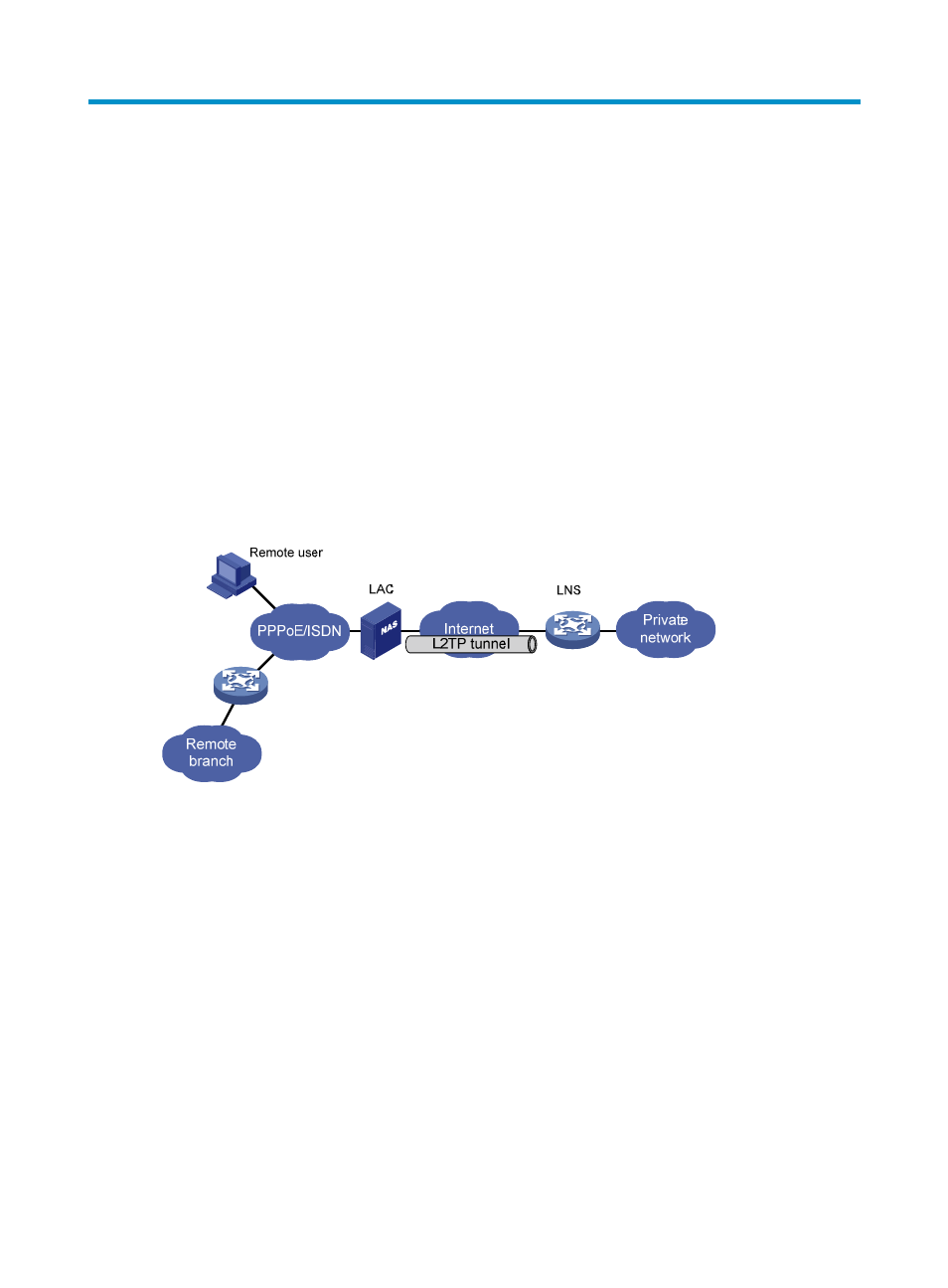Configuring l2tp, Overview, Typical l2tp networking – H3C Technologies H3C SecPath F5020 User Manual
Page 31

23
Configuring L2TP
Overview
The Layer 2 Tunneling Protocol (L2TP) is the most widely used Virtual Private Dialup Network (VPDN)
tunneling protocol. L2TP sets up point-to-point tunnels across a public network (for example, the Internet)
and transmits encapsulated PPP frames (L2TP packets) over the tunnels. With L2TP, remote users (for
example, remote branches and mobile workers) can access the private networks through L2TP tunnels
after connecting to a public network by using PPP.
As a Layer 2 VPN technology, L2TP provides a secure, cost-effective solution for remote users to access
private networks.
Typical L2TP networking
Figure 4 L2TP network diagram
As shown in
, a typical L2TP network has the following components:
•
Remote system—A remote system is usually a remote user's host or a remote branch's device that
needs to access the private network.
•
LAC—An L2TP access concentrator (LAC) is a device with PPP and L2TP capabilities. It is usually a
network access server (NAS) located at a local ISP, which provides access services mainly for PPP
users.
An LAC is an endpoint of an L2TP tunnel and lies between an LNS and a remote system. It
encapsulates packets received from a remote system by using L2TP and then sends the
encapsulated packets to the LNS. It decapsulates packets received from the LNS and then sends
the decapsulated packets to the intended remote system.
•
LNS—An L2TP network server (LNS) is both PPP and L2TP capable. It is usually an edge device on
an enterprise network.
An LNS is the other endpoint of an L2TP tunnel. It is the logical termination point of a PPP session
tunneled by the LAC. L2TP extends the termination point of a PPP session from a NAS to an LNS by
establishing a tunnel.
